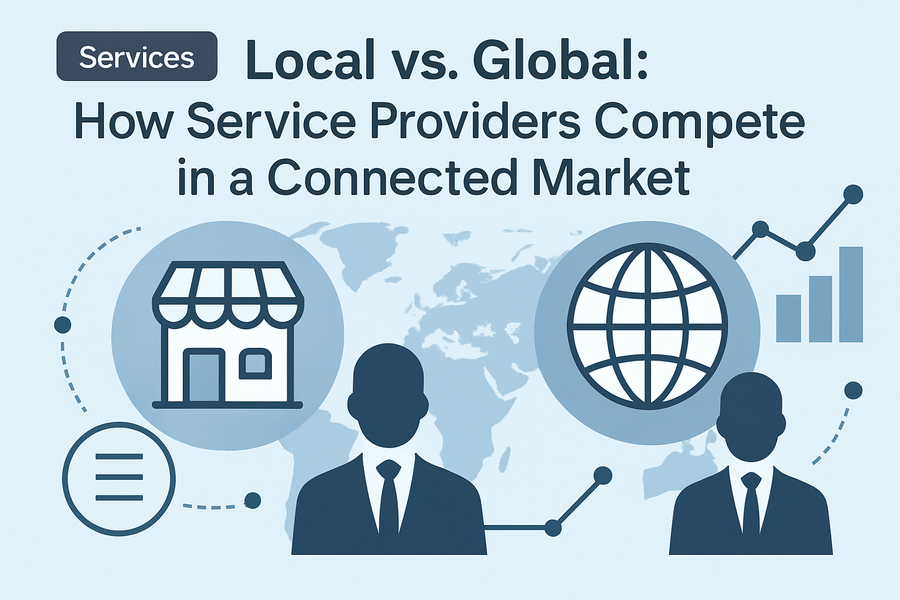
Introduction
In today's hyperconnected world, the lines between local and global markets have blurred, especially in the service industry. Thanks to technology and digital platforms, consumers can now choose between nearby providers or international players with just a few clicks.
This dynamic has reshaped how service providers operate, compete, and differentiate themselves. So how do local and global service providers stand out in a crowded market? Let's explore.
The Rise of Global Service Providers
Global service providers have expanded dramatically thanks to digitalization. Whether it's remote consultancy, virtual tutoring, content creation, or cloud-based services, companies can reach clients worldwide without opening a physical office in every country.
Key Advantages of Global Players:
- Scalability: The ability to serve large numbers of customers across countries.
- Technology: Investment in cutting-edge platforms, automation, and AI.
- Brand Recognition: Global players often benefit from strong reputations and trust.
- Cost Efficiency: Economies of scale allow for competitive pricing.
Despite these advantages, global providers face challenges — from navigating regulations to maintaining local relevance.
The Strength of Local Service Providers
Local businesses may not have the reach of global giants, but they possess unique strengths that resonate with customers on a more personal level.
Why Local Still Matters:
- Cultural Relevance: Understanding local customs, language, and preferences.
- Community Trust: Years of relationship-building foster loyalty.
- Speed and Accessibility: Proximity allows for faster response times and personalized support.
- Tailored Services: Niche offerings based on regional needs.
For example, a local landscaping company understands weather patterns and native plants better than an international player ever could.
The Competitive Landscape: Blending the Best of Both Worlds
More providers are adopting hybrid models to stay competitive. This means:
- Localization Strategies by global firms (e.g., hiring local staff, customizing services)
- Digital Transformation by local providers (e.g., offering online booking and remote consultations)
Real-World Example:
A global IT consulting firm might open regional offices staffed with locals to build client relationships, while a small-town accounting firm could leverage cloud software to attract clients beyond its immediate area.
How Consumers Shape the Market
Ultimately, consumer expectations drive competition. People now seek:
- Seamless experiences
- Transparency in pricing and communication
- High-quality results regardless of provider location
This puts pressure on both local and global providers to continuously innovate and adapt.
Conclusion
The modern service marketplace is no longer confined by geography. While global providers offer scale and tech leverage, local businesses hold the key to personalization and cultural fit. Success depends not on size, but on the ability to combine global efficiency with local empathy.
For service providers, embracing change and staying customer-focused is the most powerful strategy in this connected market.






